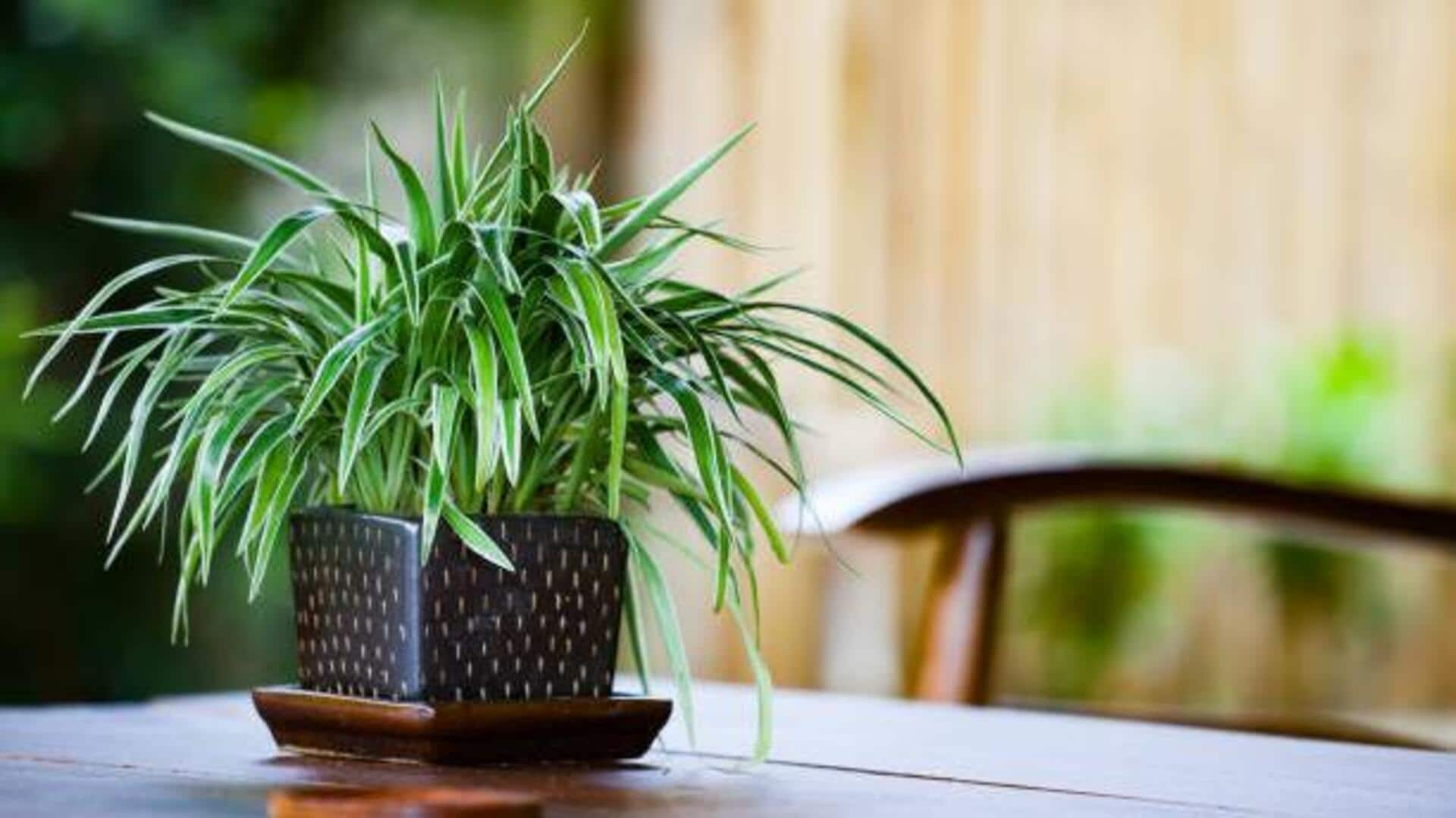
Spider plant care 101: 5 tips for healthy growth
What's the story
Spider plants make for the best houseplants. They are easy to care for and purify the air. Their arching leaves and small white flowers can bring life to any space. However, to grow them lush, you need to keep certain things in mind. Here are five practical tips to keep your spider plant thriving indoors. Follow these and keep your plant healthy all year-round.
Light
Optimal light conditions for growth
Spider plants prefer bright, indirect sunlight for best growth. Direct sunlight can scorch the leaves, while too little light may make them pale and limp. Keeping your plant near a window with filtered light or using sheer curtains can strike the right balance. If natural light is limited, consider fluorescent lights as an alternative source.
Watering
Watering techniques for healthy leaves
Proper watering is key for spider plants. They prefer slightly moist soil but are prone to overwatering, which can cause root rot. Let the top inch of soil dry out between waterings. In warmer months, you may need to water more often than in cooler seasons when growth slows down.
Humidity
Importance of humidity levels
Spider plants love moderately humid conditions (40% to 60%). Dry indoor air can brown and curl leaf tips. To keep up with humidity, you can mist its leaves occasionally or keep a tray of water close to the plant. Keeping a humidifier during dry months can also help.
Fertilization
Fertilization practices for vigorous growth
To make sure your spider plant reaches its full potential, it is important to fertilize them every four-six weeks during growth. This routine promotes a healthy and colorful foliage display. Use a balanced, liquid fertilizer but dilute it to half the recommended strength. This prevents the risk of over-fertilizing, which could otherwise damage the plant's roots or leaves, keeping your spider plant healthy and thriving.
Repotting
Repotting strategies for continued health
Repotting after every one or two years is essential for spider plants. It provides them with more space for roots to grow and fresh nutrients from new soil. Use peat-based potting mixes with perlite or vermiculite for better drainage. This is a common practice among indoor gardening enthusiasts who love their potted greens.